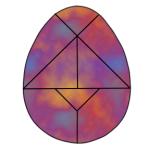Pythagoras of Samos

Date of Birth: Circa 569 B.C.
Date of Death: Circa 475 B.C.
Pythagoras of Samos, often described as the first pure mathematician, is indeed one of the best known Greek mathematicians. Unfortunately, we know very little of his achievements, as no writings of his have been discovered.
Get Prepared For Summer.
|
If you want to learn how to put a stop to the dreaded Summer Math Loss and send your child back to school in September feeling like a math super-hero then watch this free video training. |
The life of Pythogoras
He was the leader of a society which was both religious and scientific, however it was cloaked in secrecy. It had an inner circle known as the mathematikoi. All Pythagoreans were vegetarian, could not eat beans or wear clothing made from animal skin.
If you ever read different books, written by different scholars about Pythagoras; you are sure to see different dates for the same events in his life. These dates will differ by 20 or even 30 years. However, when you consider he was born over 2500 years ago, it is not surprising these dates are disputed.
He was one of three (though some say four) sons of Mnesarchus, a merchant from Tyre. His fathers job gave him the chance to travel as a young boy.
His tutor, Pherekydes, would become his greatest influence.
Another of his teachers, Thales, advised Pythagoras to travel to Egypt to learn more on the subjects of Mathematics and Astronomy.
The Mathematical Contributions of Pythagoras.
Perhaps he is best known for his famous Geometry Theorem, now called Pythagorass Theorem. Although the use of the theorem was in use for almost 1000 years before Pythagoras, by the Babylonians, Pythagoras may have been the first to prove it or was he?
Since he was the leader of his cult, all discoveries of the cult were attributed to him. He may or may not have been the mathematician to prove this, but it was most certainly a Pythagorean.
Other Theorems credited to Pythagoras.
- The sum of the angles in a triangle are equal to two right angles.
- The Pythagoras theorem state that the square on the hypotenuse is equal to the sum of the squares of the other two sides.
- Solving equations using geometry.
- Discovery of irrational numbers.
- The five regular solids.
It is unclear where, when or how Pythagoras died.
The information on this page is adapted from a full biography of Pythagoras of Samos.
I have created a printable of this information for you to offer your child an offline option.
Don't forget to browse all the other great information Printable Math Worksheets has to offer.
Keep In Touch!
You can send me a quick message, subscribe to K6Math Fun & Update, or join my Facebook Page - K6Math. Choose all the options so you don't miss any of the new material added to this site.






